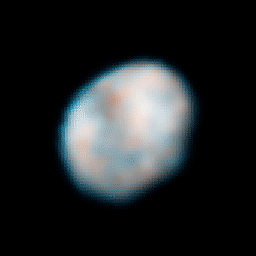Emily Lakdawalla • Oct 27, 2008
One Hubble camera ready for business
Just a quick update on Hubble here: As you may recall, a glitch within a computer system on September 27 caused it to quit most science operations, and an earlier attempt to revive it didn't work as expected. But the news is getting better: a few hours ago, the Wide Field and Planetary Camera 2 was brought up out of safe mode. A NASA status report says the camera will "resume science operations shortly." The Wide Field and Planetary Camera 2 is (as should be no surprise, given its name) very useful for studies of objects within our solar system. It's responsible for such lovely photos as this:

NASA and The Hubble Heritage Team (STScI/AURA)
Saturn from Earth, October 1999, Ring Opening Angle 20.4 Degrees
The Hubble Space Telescope captured images of Saturn every October from 1996 to 2000. During that time, Saturn moved from southern spring to summer, and the rings opened as seen from Earth.
NASA, ESA, and Lucy McFadden (U. Maryland)
Rotating Vesta
This animation is composed of 20 images of Vesta captured on May 14 and 16, 2007 by the Wide Field Planetary Camera 2. Vesta has a mean diameter of approximately 530 kilometers (330 miles), but is slightly shorter pole-to-pole (464 km / 288 mi) than it is at the equator (570 km / 354 mi) and rotates in 5.34 hours. The colors are not true colors but do show color variations across the surface.
Space Telescope Science Institute / Lowell Observatory / John Spencer
Pele erupts
False-color ultraviolet image of sulfur gas from Io's Pele plume, in the eight-o'clock position, blocking light from Jupiter in the background, as seen by the Hubble Space Telescope's Wide Field Planetary Camera 2 in 1996.Support our core enterprises
Your support powers our mission to explore worlds, find life, and defend Earth. You make all the difference when you make a gift. Give today!
Donate

 Explore Worlds
Explore Worlds Find Life
Find Life Defend Earth
Defend Earth


